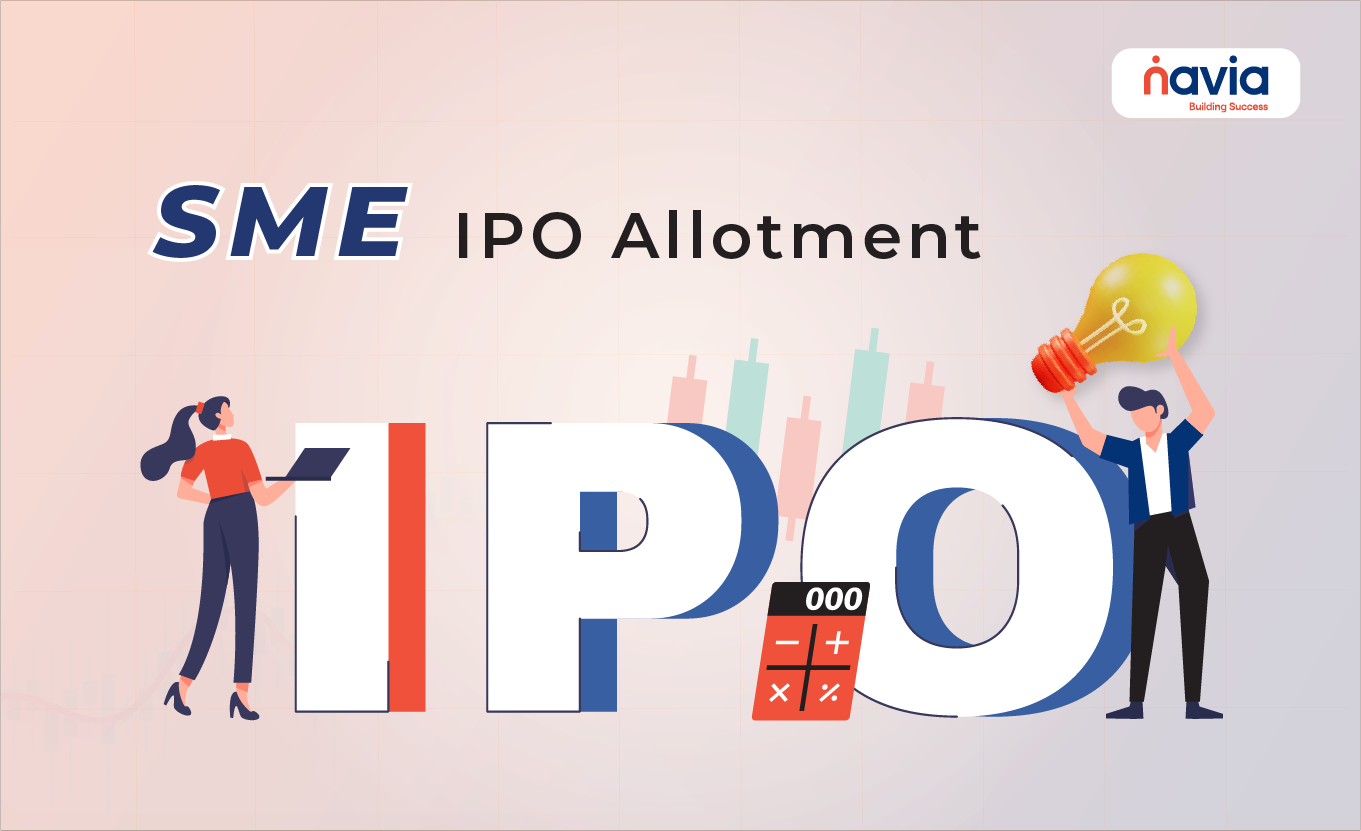SME IPO Allotment Process: A Simple Guide with Examples

The SME IPO allotment process follows specific guidelines and involves several key steps to ensure a fair allocation of shares to investors. Understanding this process is crucial for anyone interested in investing in an SME IPO. This article will break down the process for both retail and non-retail investors and provide examples to clarify how shares are allocated.
What is the SME IPO Allotment Process?
When an SME company issues an Initial Public Offering (IPO), the allotment of shares is done based on a document called the Basis of Allotment (BOA). This document, prepared by the IPO registrar, provides details on how shares will be distributed among different categories of investors, including Retail Individual Investors (RIIs) and Non-Institutional Investors (NIIs).
For an SME IPO to be successfully listed on the SME exchange, a minimum of 50 applicants is required. The process of allotment begins after the closure of the IPO and follows the rules set by SEBI.
Step-by-Step SME IPO Allotment Process
1. Minimum Allotment Requirement:
According to SEBI guidelines, each applicant must receive at least one trading lot. For example, if an SME company issues 50,00,000 shares, and the lot size is 2000 shares, the maximum number of allottees who will receive one lot is:
● 50,00,000 shares / 2000 shares per lot = 2500 applicants.
Therefore, 2500 investors will be allotted at least one lot each.
2. Retail Individual Investors (RII) Allotment:
Retail investors who bid for shares worth up to ₹2 lakhs fall under this category. If the total number of applications exceeds the shares available for RIIs, the allotment is done through a lottery system.
Example:
Suppose a company has 20 lakh shares available for the retail segment, and the minimum lot size is 10,000 shares. The maximum number of retail allottees would be:
● 20,00,000 / 10,000 = 200 applicants.
If 250 retail investors apply for shares, only 200 applicants will be allotted shares, selected through a computerized lottery. The remaining 50 applicants will not receive any allotment.
| Scenario | Shares Offered (Retail) | Lot Size | Applications Received | Allotted Through Lottery |
| Oversubscription Example | 20,00,000 | 10,000 | 250 | 200 |
3. Non-Retail Investors (NII and QIB) Allotment:
Investors in this category include Non-Institutional Investors (NIIs) and Qualified Institutional Buyers (QIBs) who bid for amounts greater than ₹2 lakhs. In case of oversubscription, the allotment is done on a proportionate basis.
Example:
If an NII applies for 10 lakh shares, and the NII category is oversubscribed by 10 times, the investor will be allotted:
● 10 lakh shares / 10 = 1 lakh shares.
| Category | Shares Applied | Oversubscription | Shares Allotted |
| Non-Institutional Investor | 10 lakh | 10x | 1 lakh |
| Qualified Institutional Buyer | 15 lakh | 5x | 3 lakh |
What Happens When the IPO is Oversubscribed?
When an IPO receives more applications than the shares available, the following occurs:
● Retail Investors: The maximum number of retail investors who can be allotted shares is calculated by dividing the total shares available by the minimum bid lot. If the number of applications exceeds this, the allotment is done via a lottery system, where successful applicants are chosen randomly.
● Non-Retail Investors: The allotment for non-retail investors is done proportionally. If an investor applies for shares that are 10 times oversubscribed, they will receive 1/10th of the shares they applied for.
Why Might You Not Get an Allotment?
There are a few common reasons why an investor may not receive an allotment in an SME IPO:
🔸 Oversubscription:
If the IPO is heavily oversubscribed, only a limited number of investors will receive shares. In such cases, allotment is done through a lottery, and some investors may not receive any shares.
🔸 Incorrect Application Details:
If your application has any incorrect details, such as incorrect PAN or Demat account information, your application may be rejected.
🔸 Non-Allotment Due to Lot System:
The SME IPO allotment process follows a lot system. If the total number of valid applications exceeds the available shares, you may not receive allotment due to the random nature of the lottery system.
SME IPO Allotment Status
Once the IPO issue closes, the registrar announces the allotment of shares. Investors can check their allotment status online by visiting the registrar’s website and entering details such as:
● Company name
● PAN number
● IPO application number
This allows investors to easily track whether they have been allotted shares or not.
Conclusion
The SME IPO allotment process, while similar to the mainboard IPO process, has its own unique aspects, especially in the way it allocates shares to retail and non-retail investors. Whether through the lottery system for retail investors or the proportionate basis for non-retail investors, the allotment process is designed to ensure fairness and transparency.

By understanding this process, investors can better prepare for SME IPOs and manage their expectations when applying for shares.
We’d Love to Hear from you





